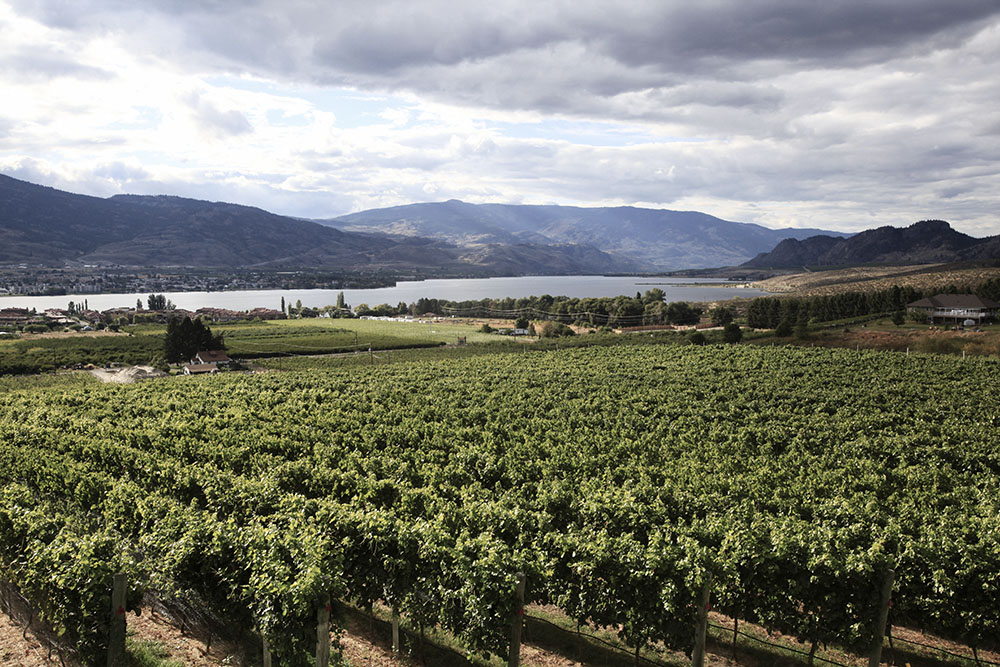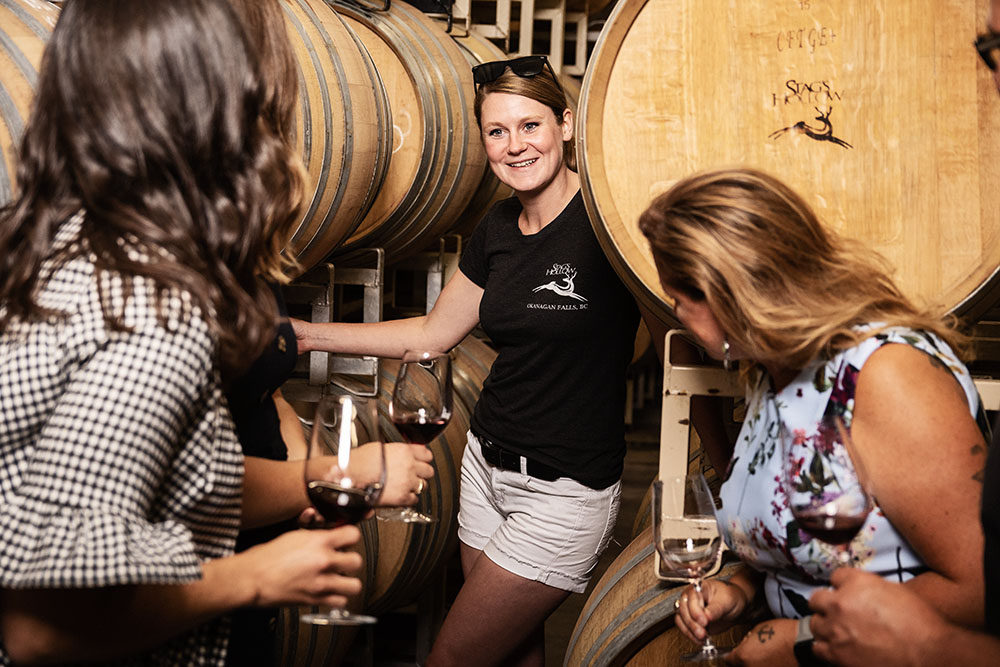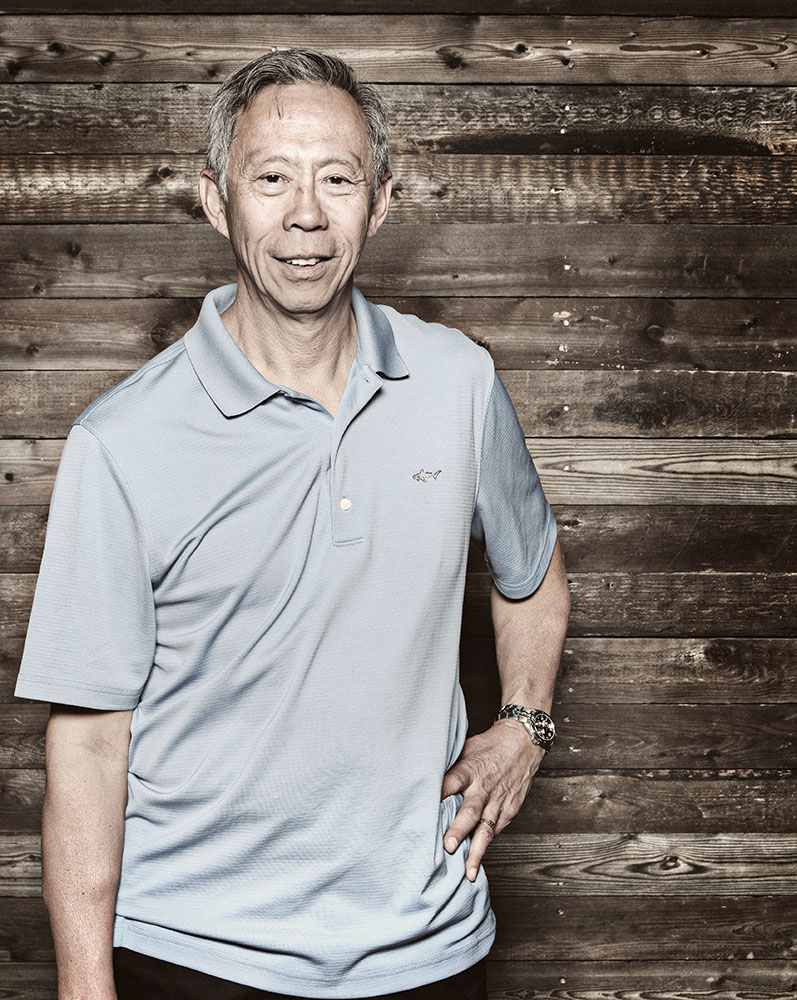A glance at the platinum winners at this year’s British Columbia Lieutenant Governor’s Wine Awards yields a snapshot of what’s happening in the Okanagan and beyond.
The platinum designation recalls the original Lieutenant Governor’s Awards for Excellence in BC Wine, which used to recognize at most only a dozen wines out of several hundred submitted. Considered the cream of the more than 700 wines entered, this year’s platinum winners survived intense scrutiny to make it to the podium. The main takeaways are that Syrah and Pinot Noir continue to capture the imagination of BC winegrowers. However, just as noteworthy are the less prolific varieties that also garnered platinum. The judges singled out a 2017 Touriga Nacional from Moon Curser Vineyards and a 2017 Roussanne from Black Hills Estate as best in their respective classes — namely “Other Single Red Variety” and “Other Single White Variety,” respectively.
It’s not unusual for “others” to reap a small share of the top honours; it was a regular occurrence at the original LGs. More importantly, this kind of recognition can help propel a variety to prominence, as was the case with Poplar Grove’s inaugural Cabernet Franc. It was introduced to a wide audience when anointed with the very first platinum medal back in the early days of the neophyte Okanagan Wine Festival. In that era, the variety was all but unknown to BC consumers.
As to why a winemaker might opt to work with a specific grape, the reasons can range from sentimental to practical — and everything in between, including terroir and site suitability. But if the resulting wine is well received, it can have a broader impact – sometimes generating more plantings within a given region, and even helping to establish a trend.
No question, back in the day, Poplar Grove’s achievement inspired others to plant the variety. While originally grown as a blending grape, today, numerous wineries make Cabernet Franc as a single variety.
Canada’s neophyte regions have little but relatively recent history on which to draw. Much if not most of the country’s knowledge has been imparted by folks who learned their viticultural knowledge elsewhere.
Few wineries are more adventuresome than Moon Curser, which, in addition to its success with Touriga Nacional, wins regular accolades for several other, lesser known varieties. Owners Chris and Beata Tolley learned viticulture and winemaking at UC Davis, although they also studied and worked around the world.

Ask them how come they work with the likes of Touriga, Tannat, Petit Verdot and others and they’ll tell you there’s no real simple answer. "Except that everything is driven by a kind of ‘I can do that’ mentality," says Chris Tolley. However, he also notes, "Why do yet another Merlot when we can grow something else and do it really well?"
"It’s not really a case of getting a reputation for planting 'alternative varieties.' They're not really 'alternative'. I kind of resent that, from an international point of view," he says. "Take Dolcetto; there's more Dolcetto planted in the world than this valley has grapes."
Moon Curser's esoteric portfolio is not to be taken lightly. Tolley owes his decision to plant Touriga Nacional to the Portuguese influence on Oliver and Osoyoos, which includes several neighbours.
More to the point, he can also get what he wants relatively easily thanks to some solid connections with nurseries south of the border, who are plugged into UC Davis' Foundation Plant Services (FPS), a grapevine importing and quarantine facility overseen by the U.S. Department of Agriculture. FPS nurseries propagate vines and offer them to the market.
"We decided to plant Tannat and went looking for 1,500 cuttings. That’s a little unusual for California, which likes to see them grafted." However, Tolley says he wanted (and got) just the cuttings.
"We don’t have any problems with Phylloxera here, due mainly to our sandy soils, so we prefer ungrafted vines. And that’s how we get everything. They [UC Davis] have an unbelievable clonal selection. We have none here in Canada and they have everything. Plus, we have to quarantine it, and so on. So we just get it out of the States," he confides.
Tolley's dad, who hails from Lake Garda, convinced him to plant Corvina Veronese. But it froze on the vine in 2009, at Thanksgiving, with temperatures of minus 9˚C.
Those kinds of experiences have made the winemaker more philosophical. "It’s a bad idea to go into making a wine with an idea of what you want to finish with. Because you make what you get," says Tolley. Or, as Beata Tolley says, "You get what you get; you don't get upset. You just make the wine that the grapes are going to give you."
"There's more Dolcetto planted in the world than this valley has grapes."
Chris Tolley

In Okanagan Falls, Stag's Hollow co-founder Larry Gerelus began his quest for alternative varieties when looking for a grape that would work in the glacier-formed kettle (a kind of hollow) for which the winery is named. Not wishing to plant a white there, because he says it’s too hot, Gerelus opted for Tempranillo.
"It ripens okay if we can get by the first frost. But climate change is causing problems, with huge variations at the beginning and end of the season. Septembers are now very wet and cool: we aren't getting the ripening temperatures we really need," he says. Although challenging, 2019 still seems to have produced good results.
When it came to planting the Shuttleworth Creek Vineyard, a later acquisition for Stag's Hollow, Gerelus decided to stick with the Spanish theme and planted Albariño, which is easy to source from Washington State and California, and Tempranillo.
"I had a blank slate to work with: it was a hay field. I didn’t want to do major varieties, and Albariño made sense. It winters well — and it ripens," he says.
Gerelus also planted Dolcetto there: "Here was an Italian variety that I thought could work and was very rare. We looked at Sangiovese but I wasn’t confident it would work."
Dolcetto also winters and ripens well. As for the Teroldego (a parent of Syrah and possibly related to Pinot Noir) that he planted alongside the Dolcetto, Gerelus freely admits he "took a real flyer."
The winery had been short-shipped various Tempranillo clones ... "So, the next one in the alphabet was Teroldego — why not take a chance on that?," he explains. "I like the grape, [though] it could use a little more heat. But we’re generally happy with the result."
The winery's plan to avoid duplicating varieties already heavily planted in the Okanagan is going well: Stag's Hollow’s portfolio is quite distinct from many other wineries, and very much appreciated by its customers.
In fact, the Italian and Spanish varieties, notes Gerelus, "Tend to be the ones that sell quickly. When we open the Tempranillo, it goes out the door. The Dolcetto is a love/hate thing; it appeals to people who like fresh reds with acidity. As for the Albariño, if you like Sauvignon Blanc [you'll like it]."
Interestingly, the Tempranillo is now among the winery's top-selling wines, and a major part of Stag's Hollow's portfolio. And Albariño is now the winery’s second largest white by volume.
Most of the wines are sold through the Stag's Hollow wine shop. Gerelus says he had hoped they would sell better outside the winery, but often it’s a question of wine knowledge.
"People know what Rioja is, but they don’t necessarily know that it's Tempranillo," he says.

It’s unlikely that Don Triggs thought he was starting a trend when he decided to plant Grüner Veltliner at his state-of-the-art Culmina Family Estate Winery. At the time, he was developing one of the Okanagan’s highest elevation vineyards, Margaret’s Bench, at 595 metres. Riesling was an obvious choice and Chardonnay was already planted at the lower levels. Triggs, who knew that the best Austrian Grüner Veltliner is grown on steeply sloped, terrassen vineyards, took a calculated risk in planting Grüner — which he then referred to as “the love child of Riesling and Chardonnay.” Now, after just a few vintages, Culmina’s Unicus Grüner Veltliner is widely known. Other wineries, such as Osoyoos’ Bordertown and the Fraser Valley’s Singletree, have also opted to plant Grüner, and there are likely more to come.
Vanessa Vineyard winemaker Howard Soon recalls how Sandhill Wines’ Small Lots program came to be in the 1990s. Then Calona Vineyards’ winemaker, Soon was working closely with Jim Wise at Burrowing Owl, which later sold a portion of its vineyard to Calona Vineyards to establish Sandhill. Calona had long wanted to forge a terroir-based presence in the Okanagan, and even had drawn up plans — that never came to fruition — to build a stand-alone estate winery.
Confident that Burrowing Owl’s Bordeaux varieties were well established, Wise was keen to try other ideas, says Soon. Along with vineyard manager Robert Goltz, they elected to trial small quantities of Italian varieties in a hot spot at the top of Burrowing Owl 1, at the very top of the rise that slopes steeply to the southwest.
“[Wise and Goltz] planted six short rows, two each of Nebbiolo, Barbera and Sangiovese,” says Soon. “It wasn’t my idea; it was Jim’s. He wanted to show that Burrowing Owl was the best vineyard site in Canada.”
The vineyard team never actually told Calona’s senior management about what they were up to. “We kept it quiet,” says Soon, noting that the varieties that were planted came with their own particular challenges. “Sangiovese is hard to control. It grows a lot of vine cane and leaves.” He goes on to explain that the poor, sandy soils at Burrowing Owl Vineyards allowed them to control the vigour with water.
“Nebbiolo was a fail because the grapes never turned colour. In my opinion, Barbera makes a better wine. But Sangiovese is easier to sell — and more storied,” says Soon, noting that the name means “Blood of Jove” in Etruscan.
In time, Soon revealed to the folks in charge at Calona, the Syrah (from Richard Cleave’s Phantom Creek Vineyard) and the Burrowing Owl grown Sangiovese. Needless to say, they were more than impressed. And the Sandhill Wines’ Small Lots program took shape.
Eventually, 4.5 acres each of Sangiovese and Barbera were planted on Burrowing Owl 2 (right below the mass of rock known as Saddle Mountain) and gained some impressive results. That vineyard became Sandhill 2. Along with the Syrah made by Alex Nichol at his Naramata winery, the Sandhill and Burrowing Owl Syrah wines were early indicators that parts of the Okanagan were ideally suited to Syrah. And there’s no question that Sandhill’s Small Lots Italian program motivated others.
The high point, and ultimate proof, for Soon came much later, at a Vancouver International Wine Festival tasting that included Sangiovese from around the world alongside wines from Italy’s Ruffino. The Sandhill Small Lots 2005 earned high praise from the Chianti winemaker, who hailed it as “what Sangiovese should be.”
So how come Sangiovese hasn’t been adopted by more growers? One reason, says Soon, is that it’s challenging “to grow a thin-skinned, large-berried variety into a good red wine. The ratio of juice to skin is much lower in Cabernet Sauvignon, for example.”
Those early releases of the “black label” Small Lots wines, whether Sangiovese, Barbera or Syrah or later blends, provided another litmus test of the Okanagan’s ability to produce premium red wines. Just over a decade prior, no one had ever believed that to be possible.
All of which just goes to show, as often as not, those who have the courage of their convictions, and think outside of the box, are well rewarded.
